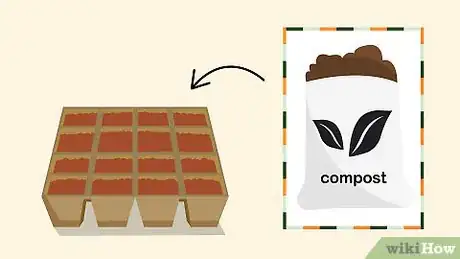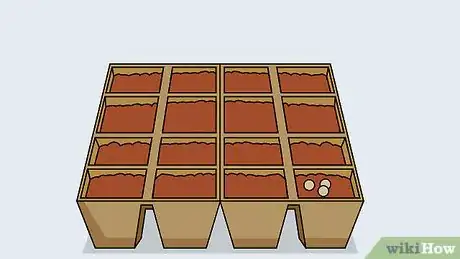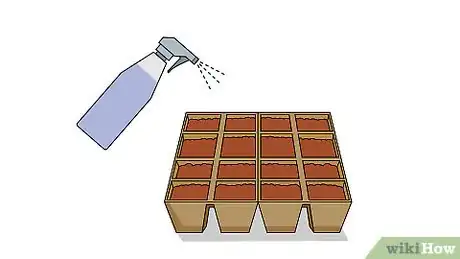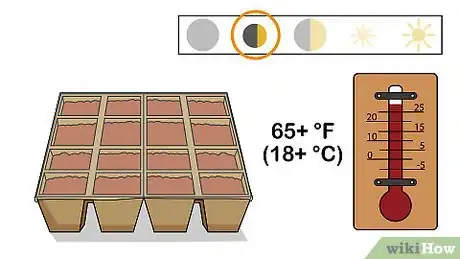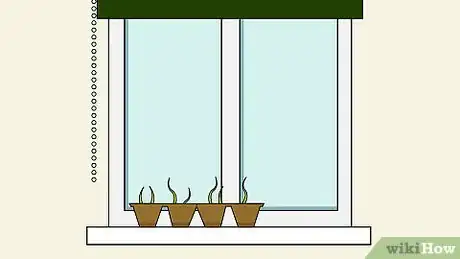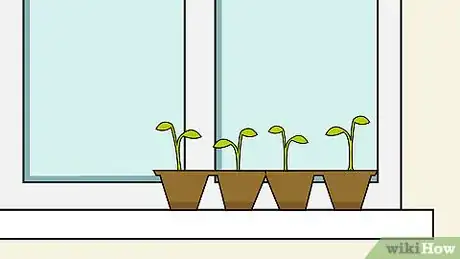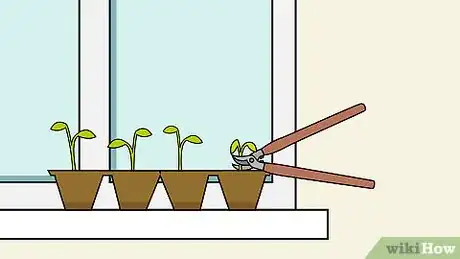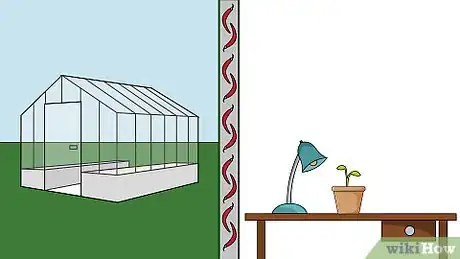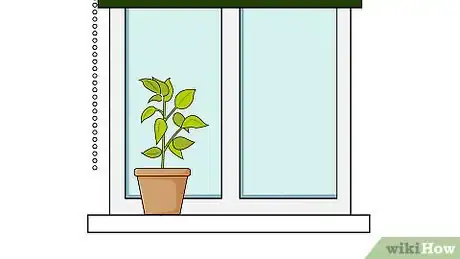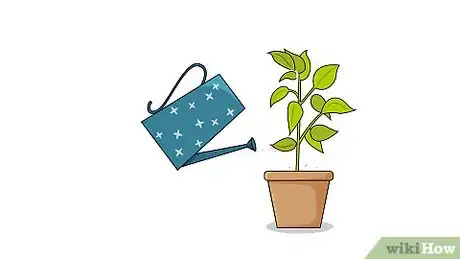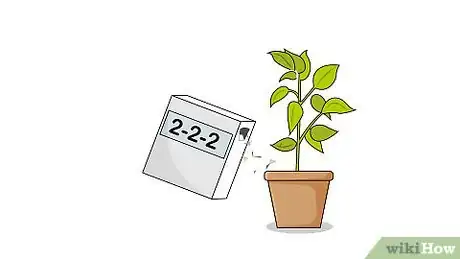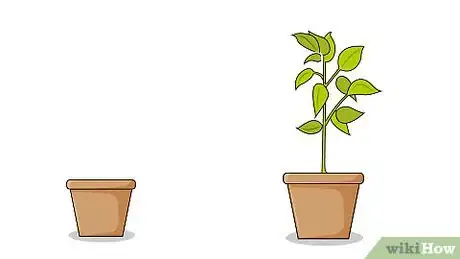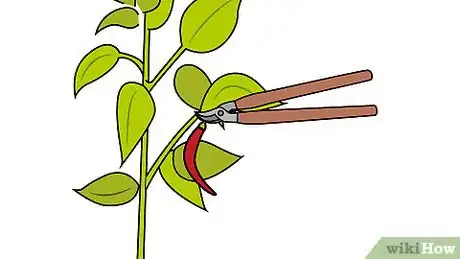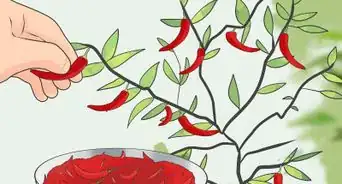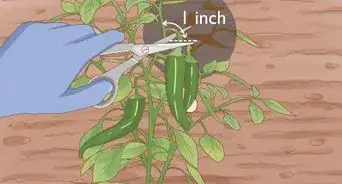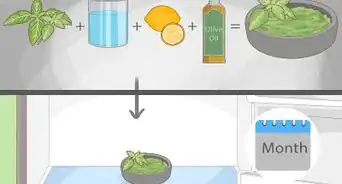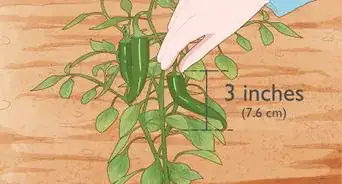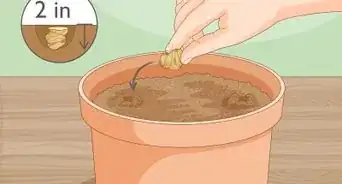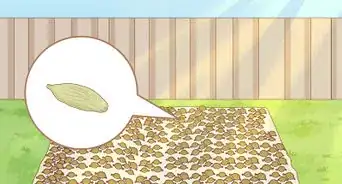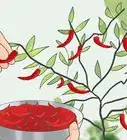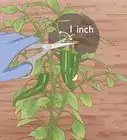This article was co-authored by Lauren Kurtz. Lauren Kurtz is a Naturalist and Horticultural Specialist. Lauren has worked for Aurora, Colorado managing the Water-Wise Garden at Aurora Municipal Center for the Water Conservation Department. She earned a BA in Environmental and Sustainability Studies from Western Michigan University in 2014.
There are 7 references cited in this article, which can be found at the bottom of the page.
wikiHow marks an article as reader-approved once it receives enough positive feedback. In this case, 92% of readers who voted found the article helpful, earning it our reader-approved status.
This article has been viewed 475,644 times.
Growing your own chili peppers is a great project if you're a container gardener looking to spice things up, want to take on a new gardening challenge, or just love hot peppers and want to have your own supply. Chili peppers can be grown inside, but you shouldn’t expect your plants or your peppers to be as large as outdoor- or greenhouse-grown ones. The key to successfully growing a chili plant is to ensure it gets plenty of light, heat, moisture, and humidity.
Steps
Germinating the Seed
-
1Fill your seed starter cell with soil. Fill the cell almost to the top, as chili seeds don’t need to be planted very deep. A good soil choice for chilis is a rich soil-based compost. Because chilis need good drainage, look for a potting mix that also contains vermiculite or perlite.[1]
- Because you're growing the chilis inside, it doesn’t really matter what time of year you plant.
-
2Plant a few seeds in the pot. Sprinkle two or three chili seeds onto the soil in the seed starter cell. This will ensure success even if some of the seeds don’t germinate. Cover the seeds with a thin layer of extra potting soil or compost.Advertisement
-
3Water the seeds and keep the soil moist. Once the seeds have been planted, water the soil. This will ensure good seed to soil contact and encourage germination. As the seeds germinate over the next two to four weeks, keep the soil moist, but not soggy, as the seeds germinate and sprout.
-
4Cover the seed starter. Covering the seeds will keep in both moisture and heat, helping the seeds to germinate. You can cover the seed pots with a plastic lid, an upside-down pop bottle with the top cut off, or you can wrap the pot with a clear plastic bag.[3]
- Covering the seeds isn't necessary, but it will reduce how much you have to water.
-
5Provide the seeds with minimal light. While the seeds are germinating, it’s important to keep them somewhere that’s relatively dark but that gets some filtered light. Also, make sure that the temperature stays above 65 °F (18.3 °C). A shed or garage with a window is an ideal place. Keep the seeds in this location until they start to sprout.[4]
-
6Uncover the sprouts and transfer them to a bright window. When sprouts appear, remove the lid or plastic bag covering the pot. Transfer the pot to a warm place near a window that will provide the sprouts with lots of indirect light, like a bathroom or warm room with a skylight.[5]
- The plants will need to get at least six hours of bright sunlight a day. If you do not have a sunny window, then you can also use a fluorescent tube light to help the plants grow.
Transplanting the Seedling
-
1Allow the sprouts to grow at least two sets of leaves. Chilis will need to be replanted every so often as they grow. The first transplant will happen when the new sprouts have two to four sets of leaves. As your sprouts grow, check them daily for leaf growth.[6]
-
2Trim off the weaker seedlings. Assess your seedlings to determine which one is the largest and healthiest. Look for fuller leaves, more leaf growth, and a taller stem. Remove the weaker seedling by trimming it with scissors at soil level, or by pinching it off with your fingers.
- Instead of trimming off the weaker seedling, you can also separate the two and plant two chili plants.[7]
-
3
-
4Remove the seedling from the seed pot. Place your hand over the base of the seedling and turn the seed starter pot over. Gently pull the seedling and root ball from the starter pot, being careful not to tear or damage any of the roots. You can give the seed cell a gentle squeeze to loosen the soil and roots if necessary.
-
5Plant the seedling in the new pot. Transfer the seedling to the larger pot that you prepared with soil. Hold the seedling steady with one hand, and add potting mix to cover the root ball and stem. Add enough soil to cover the stem to just below the first set of leaves.[10]
Growing and Harvesting the Chili Peppers
-
1Keep the plant warm. Chili peppers originated in Mexico, so most of them thrive in warm climates. To ensure your chilis survive indoors, you'll have to maintain a daytime temperature of about 80 F (27 C), and a nighttime temperature of about 70 F (21 C). Instead of keeping your entire house at this temperature, you can keep the plant warm by:[11]
- Keeping it in a greenhouse
- Installing an artificial light 3 inches (7.6 cm) above the plant
- Placing the plant on a heating mat
-
2Place your chilis in a bright and sunny window. Once the chilis are established and have been transplanted the first time, you can move them to a bright window that gets lots of direct sunlight.[12] Not only does the plant need several hours of sunlight each day, but the heat from the light will also help to keep the plant warm.
-
3Keep the soil moist as it dries out. Water the chili plant so the soil is moist. Allow the soil to dry out slightly between waterings. Chilis like damp soil, but overwatering can lead to rot and fungal growth, and it can also affect the heat level of the peppers, making them less hot than they would be.[13]
-
4Feed the plants every couple of weeks. Your chili peppers will benefit from regular fertilizer. Every two weeks, combine a balanced fertilizer with some water and feed the plant. A balanced fertilizer is one that contains equal amounts of nitrogen, phosphorus, and potassium such as 10-10-10 or 2-2-2. A fish and kelp emulsion or concentrated liquid fertilizer is a good option.[14]
- In winter, the plant may enter a dormant phase and stop growing, flowering, and fruiting. Cut back to monthly feedings if this happens, and resume twice monthly feedings when the plant goes back into an active growing phase.[15]
-
5Transplant the chili plant as it outgrows its pot. When the chili plant becomes too tall and starts to fall over, it’s time to transplant.[16] Fill a pot that’s one or two sizes larger with a few inches (several centimeters) of potting mix. Gently remove the plant from the smaller pot and transfer it to the larger one. Hold the plant steady as you cover the root ball and most of the stem with fresh soil.
- For smaller chili varieties, your plant will eventually end up in a 10- to 12-inch (25- to 30-cm) pot. A larger chili plant may need an 18-inch (46-cm) pot.[17]
-
6Harvest chilis when the peppers become shiny and bright. Your chili plant will mature and bear fruit within about three months of the first transplant. The size of the fruit will depend on the variety, and your chilis could be anywhere from an inch (2.5 cm) to 8 inches (20 cm) in length. Harvest ripe chilis by cutting the stem just above the fruit with a knife or scissors.[18]
- To protect your hands from the hot oils in the chilis, wear gloves when you harvest and cook with the peppers.
Expert Q&A
Did you know you can get expert answers for this article?
Unlock expert answers by supporting wikiHow
-
QuestionDo chilli plants need sun or shade?
 Lauren KurtzLauren Kurtz is a Naturalist and Horticultural Specialist. Lauren has worked for Aurora, Colorado managing the Water-Wise Garden at Aurora Municipal Center for the Water Conservation Department. She earned a BA in Environmental and Sustainability Studies from Western Michigan University in 2014.
Lauren KurtzLauren Kurtz is a Naturalist and Horticultural Specialist. Lauren has worked for Aurora, Colorado managing the Water-Wise Garden at Aurora Municipal Center for the Water Conservation Department. She earned a BA in Environmental and Sustainability Studies from Western Michigan University in 2014.
Professional Gardener
-
QuestionCan you grow pepper plants inside?
 Lauren KurtzLauren Kurtz is a Naturalist and Horticultural Specialist. Lauren has worked for Aurora, Colorado managing the Water-Wise Garden at Aurora Municipal Center for the Water Conservation Department. She earned a BA in Environmental and Sustainability Studies from Western Michigan University in 2014.
Lauren KurtzLauren Kurtz is a Naturalist and Horticultural Specialist. Lauren has worked for Aurora, Colorado managing the Water-Wise Garden at Aurora Municipal Center for the Water Conservation Department. She earned a BA in Environmental and Sustainability Studies from Western Michigan University in 2014.
Professional Gardener
-
QuestionCan you grow bell peppers inside?
 Lauren KurtzLauren Kurtz is a Naturalist and Horticultural Specialist. Lauren has worked for Aurora, Colorado managing the Water-Wise Garden at Aurora Municipal Center for the Water Conservation Department. She earned a BA in Environmental and Sustainability Studies from Western Michigan University in 2014.
Lauren KurtzLauren Kurtz is a Naturalist and Horticultural Specialist. Lauren has worked for Aurora, Colorado managing the Water-Wise Garden at Aurora Municipal Center for the Water Conservation Department. She earned a BA in Environmental and Sustainability Studies from Western Michigan University in 2014.
Professional Gardener
References
- ↑ https://www.bbg.org/gardening/article/growing_chile_peppers_indoors
- ↑ http://www.chilipeppermadness.com/growing-chili-peppers/growing-chili-peppers-from-seed
- ↑ http://www.chilipeppermadness.com/growing-chili-peppers/growing-chili-peppers-from-seed
- ↑ http://www.chilipeppermadness.com/growing-chili-peppers/growing-chili-peppers-from-seed
- ↑ http://www.telegraph.co.uk/gardening/grow-to-eat/how-to-grow-chillies-anywhere-in-britain/
- ↑ http://www.chilipeppermadness.com/growing-chili-peppers/growing-chili-peppers-from-seed
- ↑ http://www.chilipeppermadness.com/growing-chili-peppers/growing-chili-peppers-from-seed
- ↑ http://www.telegraph.co.uk/gardening/grow-to-eat/how-to-grow-chillies-anywhere-in-britain/
- ↑ https://www.pepperscale.com/growing-hot-peppers-indoors/
- ↑ http://www.chilipeppermadness.com/growing-chili-peppers/growing-chili-peppers-from-seed
- ↑ https://www.pepperscale.com/growing-hot-peppers-indoors/
- ↑ http://www.chilipeppermadness.com/growing-chili-peppers/growing-chili-peppers-indoors
- ↑ https://www.pepperscale.com/growing-hot-peppers-indoors/
- ↑ http://www.chilipeppermadness.com/growing-chili-peppers/growing-chili-peppers-indoors
- ↑ https://www.bbg.org/gardening/article/growing_chile_peppers_indoors
- ↑ http://www.chilipeppermadness.com/growing-chili-peppers/growing-chili-peppers-from-seed
- ↑ https://www.bbg.org/gardening/article/growing_chile_peppers_indoors
- ↑ http://www.chilipeppermadness.com/growing-chili-peppers/harvesting-your-chili-peppers
About This Article
To grow chili peppers indoors, start by planting the seeds in a seed starter cell, covering the cell, and putting it somewhere dark to germinate. When the seeds sprout, uncover them and put them in a warm spot that gets at least 6 hours of sunlight a day. Check your sprouts every day, and transplant them into small pots as soon as they have 2-4 sets of leaves. Make sure you keep your growing plants warm, water them to keep the soil moist, and fertilize them regularly. Additionally, transplant your plants again if they outgrow their pots. For information from our Horticultural reviewer on how and when to harvest chilis from your plants, read on!
